#regency
Text
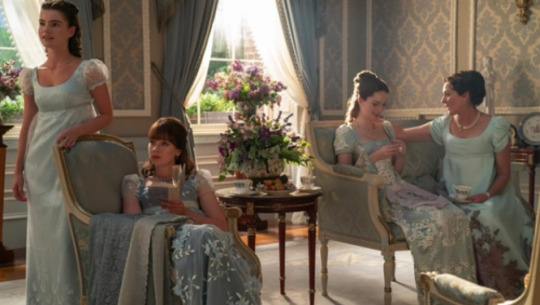
on wednesdays we wear bridgerton blue
#bridgerton#history#historical#regency#regency era#Aesthetic#Coquette#Dollette#female hysteria#femcel#lana del rey#hyperfeminine#girlblogger#girlythings#girlhood#girlblogging#it girl#girlworld#lana del rey aka lizzy grant#2014 tumblr#2014 aesthetic#sofia coppola#girl interrupted syndrome#hell is a teenage girl#femininity
120 notes
·
View notes
Note
Hi hi!
Do we have any Jane Austen + Crowley interactions fic in this household?
Thanks and have a nice day ^^
We have a #jane austen tag, the last post on which features a couple. But here is a post dedicated to Crowley & Jane Austen fics...
Goodbye, Dear Jane by siephilde42 (T)
Aziraphale asks Crowley if he has ever gotten attached to another person, and Crowley admits that he grew quite fond of a certain author. Crowley feels guilty because he never properly said goodbye to her, so Aziraphale proposes a trip through time.
well-versed in etiquette, extraordinarily nice by laiqualaurelote (G)
Once she had said to him, hoping to probe: “It is a truth universally acknowledged that a single man in possession of a good fortune must be in want of a wife.”
To which Mr Crowley had only responded: “What do you know of the universe, Miss Austen?”
In which Jane Austen, criminal mastermind and aspiring novelist, pulls off the 1810 Clerkenwell Diamond Robbery, with the help of a certain demon.
All those truths (some not so universally acknowledged) by strawberriesandtophats (E)
In which Aziraphale and Crowley meet up at a party during the Regency Period and have a great time eavesdropping on a certain famous author.
Literature and Liquor by Tossukka (T)
The year is 1809. Crowley’s friend Jane is a master smuggler of both goods and information who seems to know exactly who people are and how they act. She asks Crowley’s help with a larger robbery she has been planning, and Crowley agrees without hesitation. Meanwhile Aziraphale has been helping her friend, a brilliant author Miss Austen revise her novel manuscripts in the hopes that they could one day be published for the wider audiences. Aziraphale finds the books witty, innovative character studies of British gentry, but getting a romance novel written by a woman published in the early 1800s would take a real miracle.
When Aziraphale accompanies Jane to a ball, they run into Crowley, and all three are surprised by the other two being acquainted. Although the angel and the demon are happy to not poke further into each other’s businesses with Miss Austen, Jane seems to be convinced her two friends are in the middle of a great love story like from one of her novels and need some encouragement to admit their true feelings.
'Not Enough to Tempt Me' by ZephyrOfAllTrades (T)
Aziraphale found a new friend. A budding writer who unfortunately dabbles in matchmaking. It was all fun and games until she reunited with a familiar red-headed demon.
- Mod D
#good omens#ineffable husbands#ineffable wives#ineffable partners#jane austen#crowley & jane austen#aziraphale & jane austen#regency#mod d
87 notes
·
View notes
Text
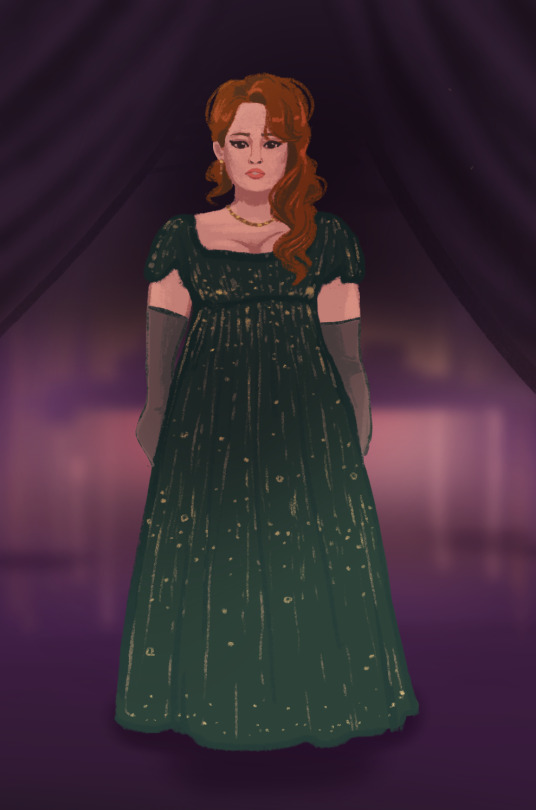
why am i so excited for the new bridgerton season
#its because its so pretty#i love the costumes so much man#bridgerton#bridgerton season 3#bridgerton netflix#penelope featherington#bridgerton s3#bridgerton fanart#costume design#regency#fanart#the emerald of the season#polin
113 notes
·
View notes
Text


(Almost) Every Costume Per Episode + Mary Sharma's pink pelisse with gold and white print in 2x04
#Bridgerton#BridgertonEdit#weloveperioddrama#perioddramaedit#period drama#historical drama#Mary Sharma#Victory#costumeedit#costumes#costume drama#Almost Every Costume Per Episode#Regency#Regency fashion#Regency era#historical fashion#Nineteenth century#1800s#Awkward-Sultana
25 notes
·
View notes
Text
Pale pink silk evening dress from the late 1810s
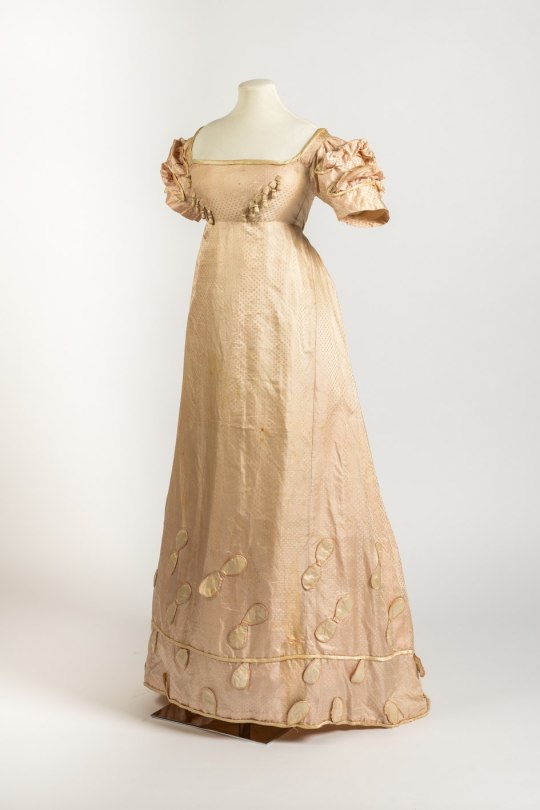
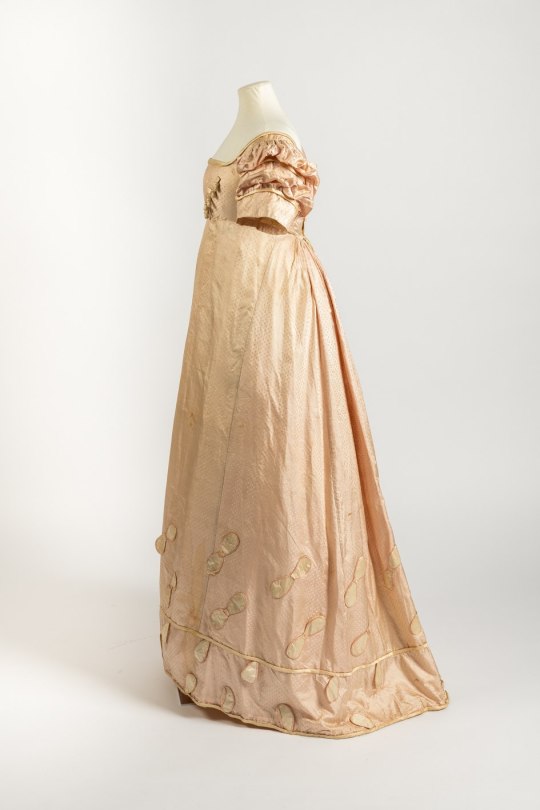
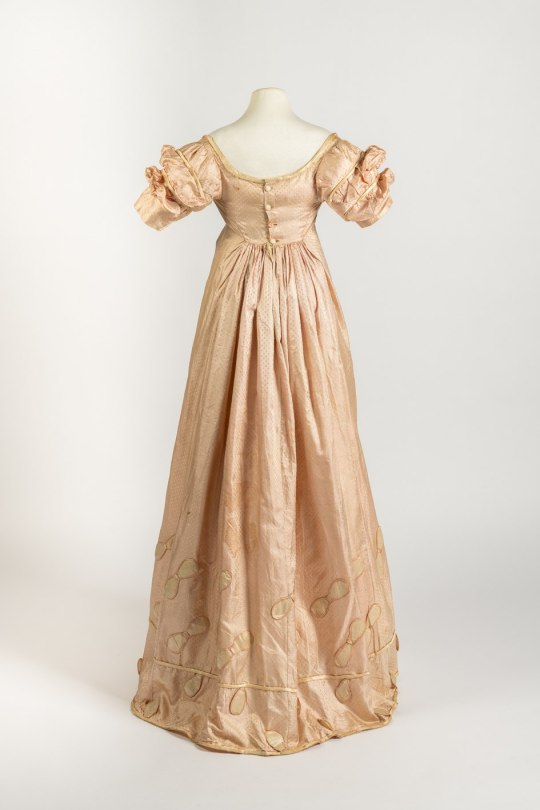
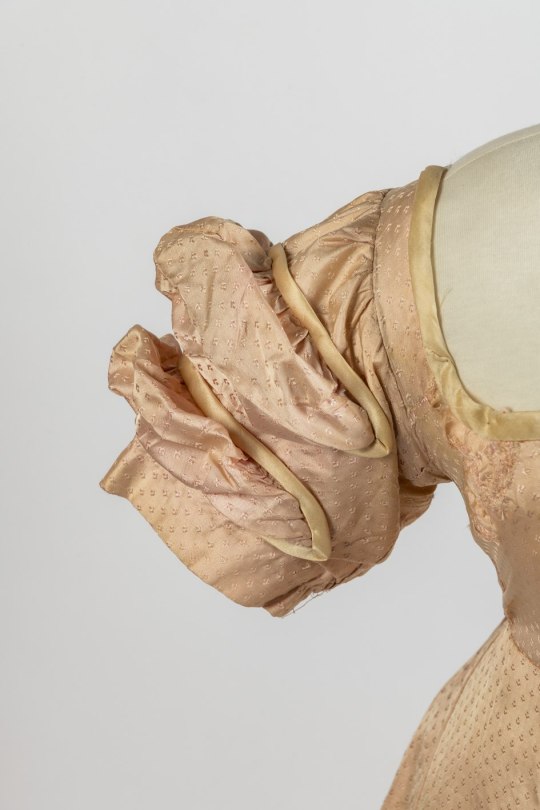

Fashion Museum Bath
24 notes
·
View notes
Text

Rebecca at the Well by Washington Allston, 1816, USA.
20 notes
·
View notes
Text
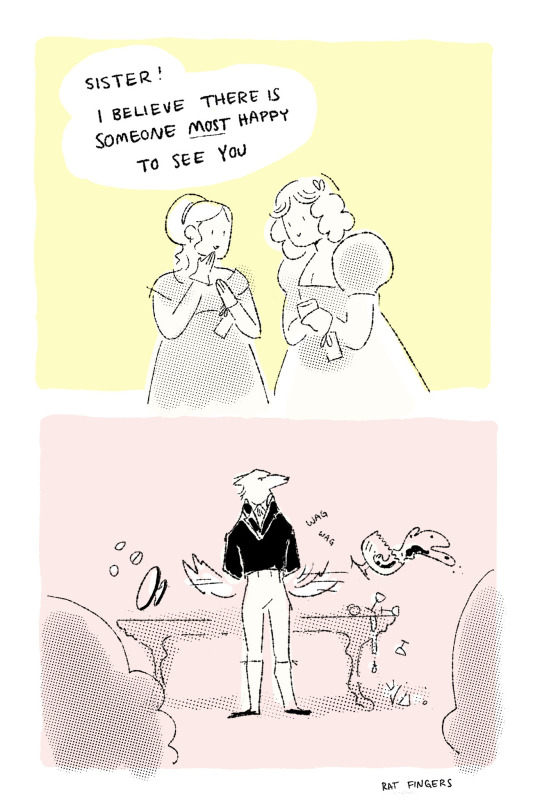
how can you tell
prev / next
71K notes
·
View notes
Text
A Guide to Historically Accurate Regency-Era Names

I recently received a message from a historical romance writer asking if I knew any good resources for finding historically accurate Regency-era names for their characters.
Not knowing any off the top of my head, I dug around online a bit and found there really isn’t much out there. The vast majority of search results were Buzzfeed-style listicles which range from accurate-adjacent to really, really, really bad.
I did find a few blog posts with fairly decent name lists, but noticed that even these have very little indication as to each name’s relative popularity as those statistical breakdowns really don't exist.
I began writing up a response with this information, but then I (being a research addict who was currently snowed in after a blizzard) thought hey - if there aren’t any good resources out there why not make one myself?
As I lacked any compiled data to work from, I had to do my own data wrangling on this project. Due to this fact, I limited the scope to what I thought would be the most useful for writers who focus on this era, namely - people of a marriageable age living in the wealthiest areas of London.
So with this in mind - I went through period records and compiled the names of 25,000 couples who were married in the City of Westminster (which includes Mayfair, St. James and Hyde Park) between 1804 to 1821.
So let’s see what all that data tells us…
To begin - I think it’s hard for us in the modern world with our wide and varied abundance of first names to conceive of just how POPULAR popular names of the past were.
If you were to take a modern sample of 25-year-old (born in 1998) American women, the most common name would be Emily with 1.35% of the total population. If you were to add the next four most popular names (Hannah, Samantha, Sarah and Ashley) these top five names would bring you to 5.5% of the total population. (source: Social Security Administration)
If you were to do the same survey in Regency London - the most common name would be Mary with 19.2% of the population. Add the next four most popular names (Elizabeth, Ann, Sarah and Jane) and with just 5 names you would have covered 62% of all women.
To hit 62% of the population in the modern survey it would take the top 400 names.
The top five Regency men’s names (John, William, Thomas, James and George) have nearly identical statistics as the women’s names.
I struggled for the better part of a week with how to present my findings, as a big list in alphabetical order really fails to get across the popularity factor and also isn’t the most tumblr-compatible format. And then my YouTube homepage recommended a random video of someone ranking all the books they’d read last year - and so I present…
The Regency Name Popularity Tier List
The Tiers
S+ - 10% of the population or greater. There is no modern equivalent to this level of popularity. 52% of the population had one of these 7 names.
S - 2-10%. There is still no modern equivalent to this level of popularity. Names in this percentage range in the past have included Mary and William in the 1880s and Jennifer in the late 1970s (topped out at 4%).
A - 1-2%. The top five modern names usually fall in this range. Kids with these names would probably include their last initial in class to avoid confusion. (1998 examples: Emily, Sarah, Ashley, Michael, Christopher, Brandon.)
B - .3-1%. Very common names. Would fall in the top 50 modern names. You would most likely know at least 1 person with these names. (1998 examples: Jessica, Megan, Allison, Justin, Ryan, Eric)
C - .17-.3%. Common names. Would fall in the modern top 100. You would probably know someone with these names, or at least know of them. (1998 examples: Chloe, Grace, Vanessa, Sean, Spencer, Seth)
D - .06-.17%. Less common names. In the modern top 250. You may not personally know someone with these names, but you’re aware of them. (1998 examples: Faith, Cassidy, Summer, Griffin, Dustin, Colby)
E - .02-.06%. Uncommon names. You’re aware these are names, but they are not common. Unusual enough they may be remarked upon. (1998 examples: Calista, Skye, Precious, Fabian, Justice, Lorenzo)
F - .01-.02%. Rare names. You may have heard of these names, but you probably don’t know anyone with one. Extremely unusual, and would likely be remarked upon. (1998 examples: Emerald, Lourdes, Serenity, Dario, Tavian, Adonis)
G - Very rare names. There are only a handful of people with these names in the entire country. You’ve never met anyone with this name.
H - Virtually non-existent. Names that theoretically could have existed in the Regency period (their original source pre-dates the early 19th century) but I found fewer than five (and often no) period examples of them being used in Regency England. (Example names taken from romance novels and online Regency name lists.)
Just to once again reinforce how POPULAR popular names were before we get to the tier lists - statistically, in a ballroom of 100 people in Regency London: 80 would have names from tiers S+/S. An additional 15 people would have names from tiers A/B and C. 4 of the remaining 5 would have names from D/E. Only one would have a name from below tier E.
Women's Names
S+ Mary, Elizabeth, Ann, Sarah
S - Jane, Mary Ann+, Hannah, Susannah, Margaret, Catherine, Martha, Charlotte, Maria
A - Frances, Harriet, Sophia, Eleanor, Rebecca
B - Alice, Amelia, Bridget~, Caroline, Eliza, Esther, Isabella, Louisa, Lucy, Lydia, Phoebe, Rachel, Susan
C - Ellen, Fanny*, Grace, Henrietta, Hester, Jemima, Matilda, Priscilla
D - Abigail, Agnes, Amy, Augusta, Barbara, Betsy*, Betty*, Cecilia, Christiana, Clarissa, Deborah, Diana, Dinah, Dorothy, Emily, Emma, Georgiana, Helen, Janet^, Joanna, Johanna, Judith, Julia, Kezia, Kitty*, Letitia, Nancy*, Ruth, Winifred>
E - Arabella, Celia, Charity, Clara, Cordelia, Dorcas, Eve, Georgina, Honor, Honora, Jennet^, Jessie*^, Joan, Joyce, Juliana, Juliet, Lavinia, Leah, Margery, Marian, Marianne, Marie, Mercy, Miriam, Naomi, Patience, Penelope, Philadelphia, Phillis, Prudence, Rhoda, Rosanna, Rose, Rosetta, Rosina, Sabina, Selina, Sylvia, Theodosia, Theresa
F - (selected) Alicia, Bethia, Euphemia, Frederica, Helena, Leonora, Mariana, Millicent, Mirah, Olivia, Philippa, Rosamund, Sybella, Tabitha, Temperance, Theophila, Thomasin, Tryphena, Ursula, Virtue, Wilhelmina
G - (selected) Adelaide, Alethia, Angelina, Cassandra, Cherry, Constance, Delilah, Dorinda, Drusilla, Eva, Happy, Jessica, Josephine, Laura, Minerva, Octavia, Parthenia, Theodora, Violet, Zipporah
H - Alberta, Alexandra, Amber, Ashley, Calliope, Calpurnia, Chloe, Cressida, Cynthia, Daisy, Daphne, Elaine, Eloise, Estella, Lilian, Lilias, Francesca, Gabriella, Genevieve, Gwendoline, Hermione, Hyacinth, Inez, Iris, Kathleen, Madeline, Maude, Melody, Portia, Seabright, Seraphina, Sienna, Verity
Men's Names
S+ John, William, Thomas
S - James, George, Joseph, Richard, Robert, Charles, Henry, Edward, Samuel
A - Benjamin, (Mother’s/Grandmother’s maiden name used as first name)#
B - Alexander^, Andrew, Daniel, David>, Edmund, Francis, Frederick, Isaac, Matthew, Michael, Patrick~, Peter, Philip, Stephen, Timothy
C - Abraham, Anthony, Christopher, Hugh>, Jeremiah, Jonathan, Nathaniel, Walter
D - Adam, Arthur, Bartholomew, Cornelius, Dennis, Evan>, Jacob, Job, Josiah, Joshua, Lawrence, Lewis, Luke, Mark, Martin, Moses, Nicholas, Owen>, Paul, Ralph, Simon
E - Aaron, Alfred, Allen, Ambrose, Amos, Archibald, Augustin, Augustus, Barnard, Barney, Bernard, Bryan, Caleb, Christian, Clement, Colin, Duncan^, Ebenezer, Edwin, Emanuel, Felix, Gabriel, Gerard, Gilbert, Giles, Griffith, Harry*, Herbert, Humphrey, Israel, Jabez, Jesse, Joel, Jonas, Lancelot, Matthias, Maurice, Miles, Oliver, Rees, Reuben, Roger, Rowland, Solomon, Theophilus, Valentine, Zachariah
F - (selected) Abel, Barnabus, Benedict, Connor, Elijah, Ernest, Gideon, Godfrey, Gregory, Hector, Horace, Horatio, Isaiah, Jasper, Levi, Marmaduke, Noah, Percival, Shadrach, Vincent
G - (selected) Albion, Darius, Christmas, Cleophas, Enoch, Ethelbert, Gavin, Griffin, Hercules, Hugo, Innocent, Justin, Maximilian, Methuselah, Peregrine, Phineas, Roland, Sebastian, Sylvester, Theodore, Titus, Zephaniah
H - Albinus, Americus, Cassian, Dominic, Eric, Milo, Rollo, Trevor, Tristan, Waldo, Xavier
# Men were sometimes given a family surname (most often their mother's or grandmother's maiden name) as their first name - the most famous example of this being Fitzwilliam Darcy. If you were to combine all surname-based first names as a single 'name' this is where the practice would rank.
*Rank as a given name, not a nickname
+If you count Mary Ann as a separate name from Mary - Mary would remain in S+ even without the Mary Anns included
~Primarily used by people of Irish descent
^Primarily used by people of Scottish descent
>Primarily used by people of Welsh descent
I was going to continue on and write about why Regency-era first names were so uniform, discuss historically accurate surnames, nicknames, and include a little guide to finding 'unique' names that are still historically accurate - but this post is already very, very long, so that will have to wait for a later date.
If anyone has any questions/comments/clarifications in the meantime feel free to message me.
Methodology notes: All data is from marriage records covering six parishes in the City of Westminster between 1804 and 1821. The total sample size was 50,950 individuals.
I chose marriage records rather than births/baptisms as I wanted to focus on individuals who were adults during the Regency era rather than newborns. I think many people make the mistake when researching historical names by using baby name data for the year their story takes place rather than 20 to 30 years prior, and I wanted to avoid that. If you are writing a story that takes place in 1930 you don’t want to research the top names for 1930, you need to be looking at 1910 or earlier if you are naming adult characters.
I combined (for my own sanity) names that are pronounced identically but have minor spelling differences: i.e. the data for Catherine also includes Catharines and Katherines, Susannah includes Susannas, Phoebe includes Phebes, etc.
The compound 'Mother's/Grandmother's maiden name used as first name' designation is an educated guesstimate based on what I recognized as known surnames, as I do not hate myself enough to go through 25,000+ individuals and confirm their mother's maiden names. So if the tally includes any individuals who just happened to be named Fitzroy/Hastings/Townsend/etc. because their parents liked the sound of it and not due to any familial relations - my bad.
I did a small comparative survey of 5,000 individuals in several rural communities in Rutland and Staffordshire (chosen because they had the cleanest data I could find and I was lazy) to see if there were any significant differences between urban and rural naming practices and found the results to be very similar. The most noticeable difference I observed was that the S+ tier names were even MORE popular in rural areas than in London. In Rutland between 1810 and 1820 Elizabeths comprised 21.4% of all brides vs. 15.3% in the London survey. All other S+ names also saw increases of between 1% and 6%. I also observed that the rural communities I surveyed saw a small, but noticeable and fairly consistent, increase in the use of names with Biblical origins.
Sources of the records I used for my survey:
Ancestry.com. England & Wales Marriages, 1538-1988 [database on-line].
Ancestry.com. Westminster, London, England, Church of England Marriages and Banns, 1754-1935 [database on-line].
#history#regency#1800s#1810s#names#london#writing resources#regency romance#jane austen#bridgerton#bridgerton would be an exponentially better show if daphne's name was dorcas#behold - the reason i haven't posted in three weeks
9K notes
·
View notes
Text

Fanart for "What fools these mortals be" by Linnetagain on Ao3 🖤
2K notes
·
View notes
Text
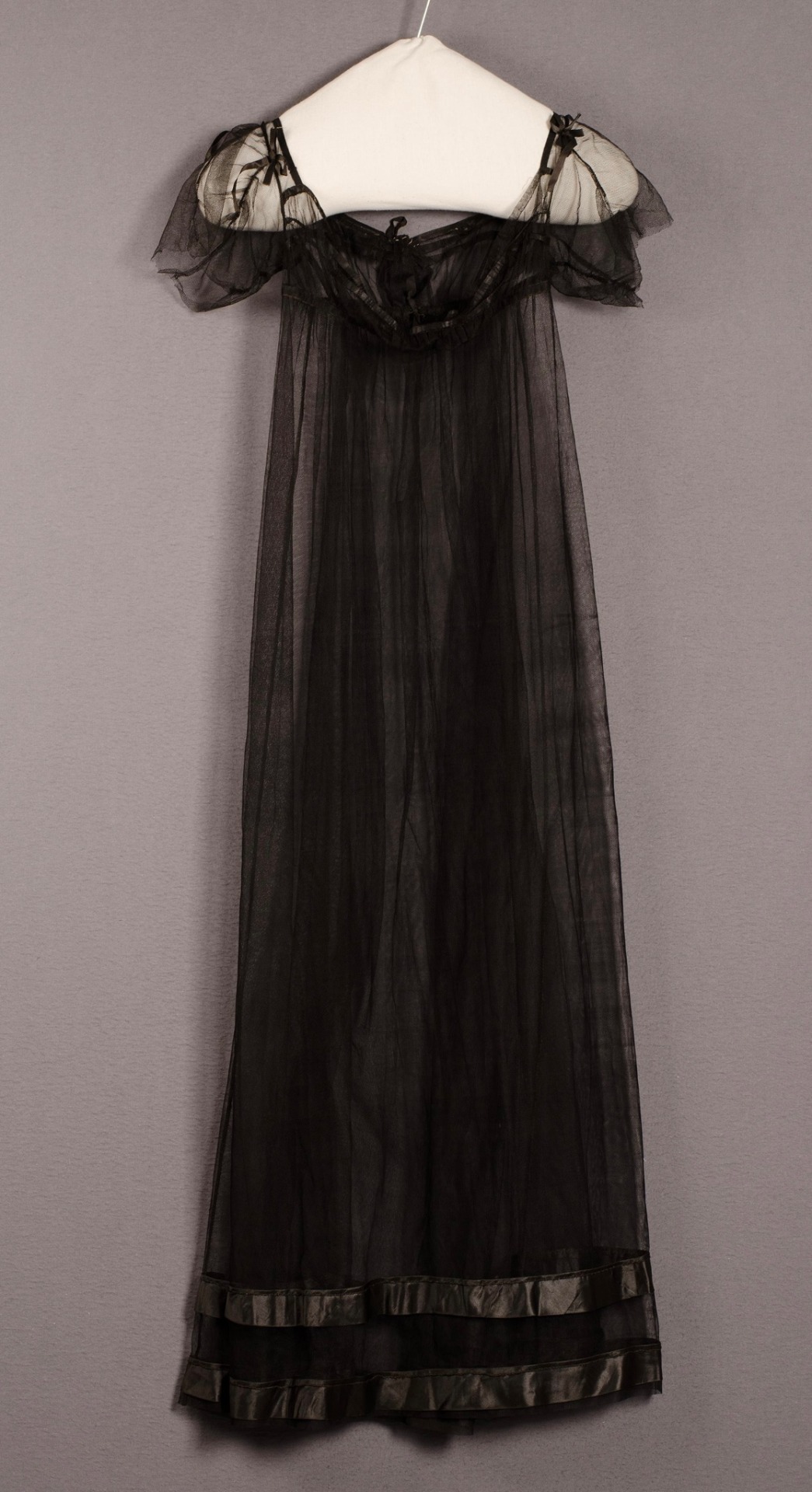

Black empire style gown
Tulle and silk
C. 1800-1810, Napoleonic era
Centraal Museum, Utrecht
#dresses#dress#centraal museum#CMU#fashion#napoleonic era#napoleonic#first french empire#french empire#19th century#france#history#tulle#silk#pretty#fashion history#history of fashion#historical fashion#1800s#regency#empire style#regency fashion#jane austen#1800s fashion
4K notes
·
View notes
Text
Beatrice as a regency era inspired portrait!
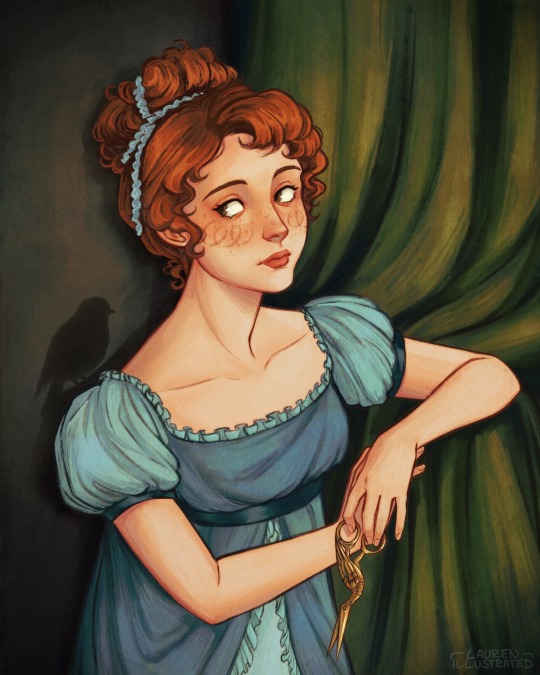
Idc if it’s too early I’m going into otgw brainrot now
#otgw#beatrice otgw#otgw beatrice#over the garden wall#over the garden wall fanart#otgw fanart#otgw art#regency#regency era#character art#drawing#digital drawing#illustration#digital art#illustrator#character design#portrait painting#regency period#digital painting#digital paintings#illustration print
3K notes
·
View notes
Text

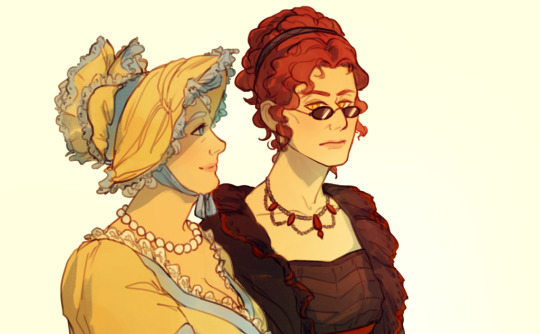
On their way to a cotillion ball and a diamond robbery.
Fashion references used under the cut
Disclaimer: I am a historical fashion enthusiast but by no means an expert. Poses were inspired/referenced from two of these fashion plates. Liberties were taken based on vibes.
Aziraphale:

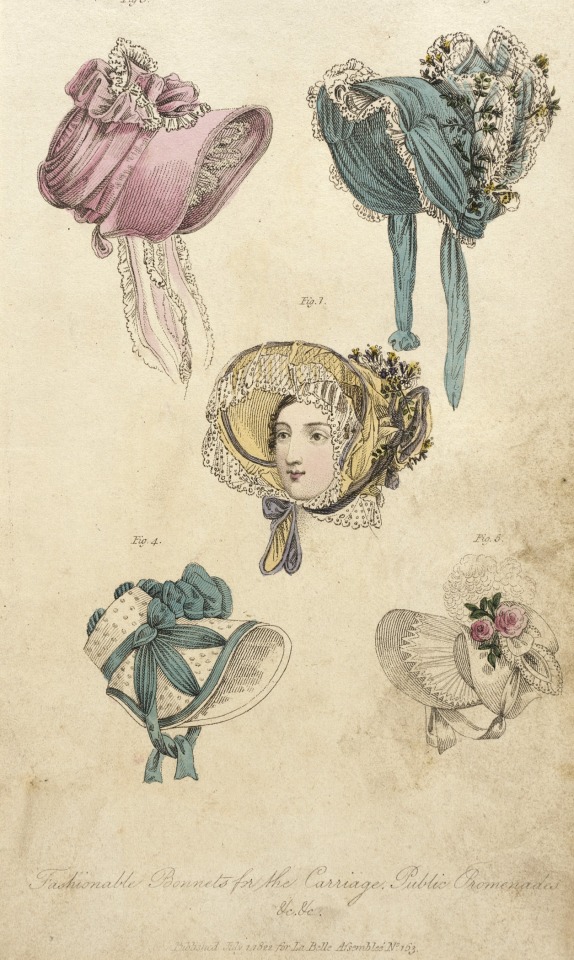
Crowley:



#good omens#aziraphale#crowley#ineffible husbands#ineffible wives#good omens fanart#what are the chances the ball and the robbery were the same event#regency#guavi draws
1K notes
·
View notes
Text
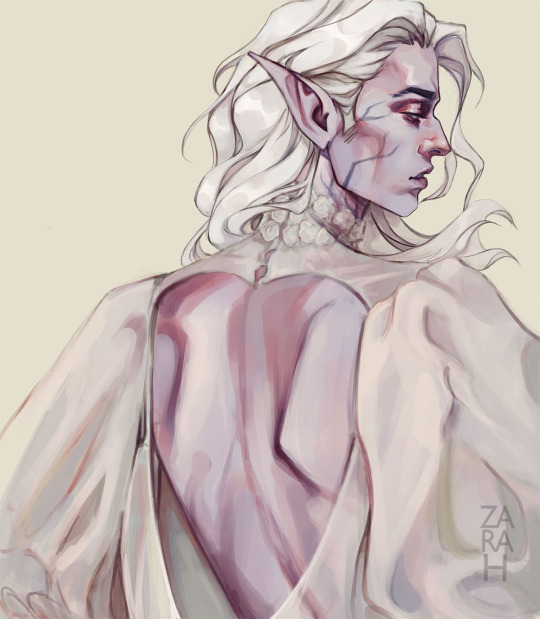
My regency dnd shadow sorcerer, Iasonas.
I saw this shirt design and couldn’t resist drawing them in it.
1K notes
·
View notes
Text
Locks of hair from Percy Shelley, Mary Shelley, and Lord Byron, next to their portraits:

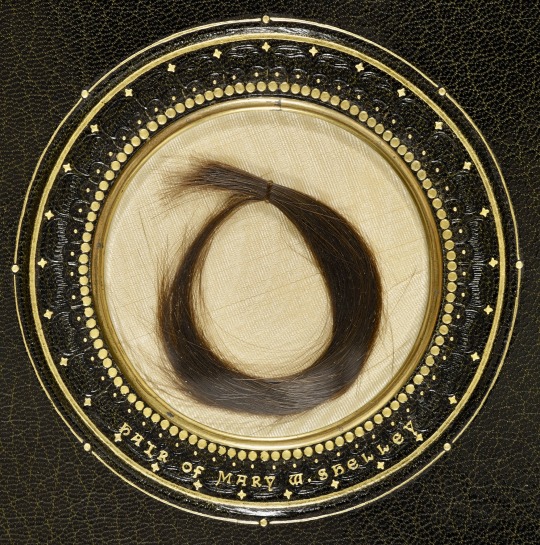


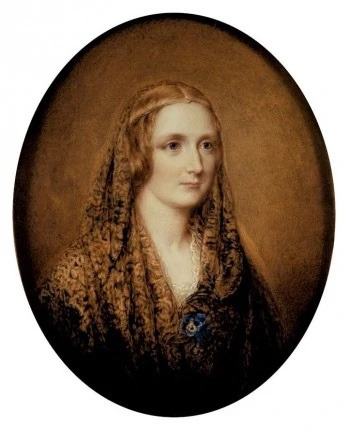
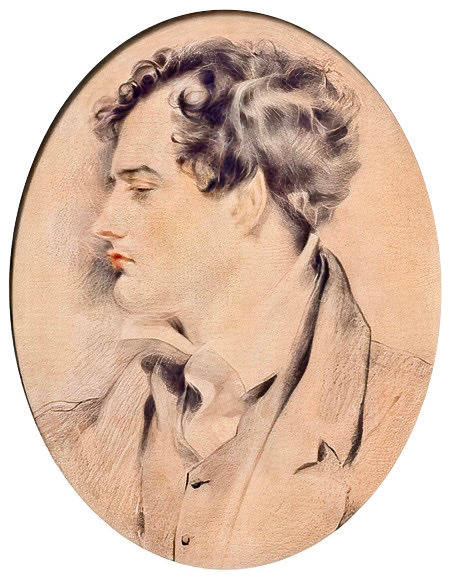
#percy shelley#mary shelley#lord byron#romanticism#dark academia#lock of hair#19th century#victoriana#victorian#georgian#regency#literary history#relics#artefacts#hair#portraits#the geneva squad#the pisa circle
2K notes
·
View notes
Text
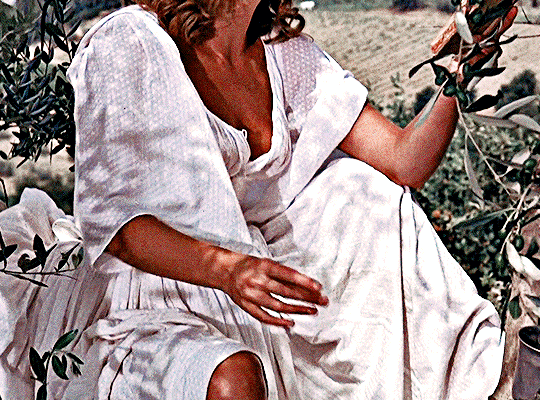




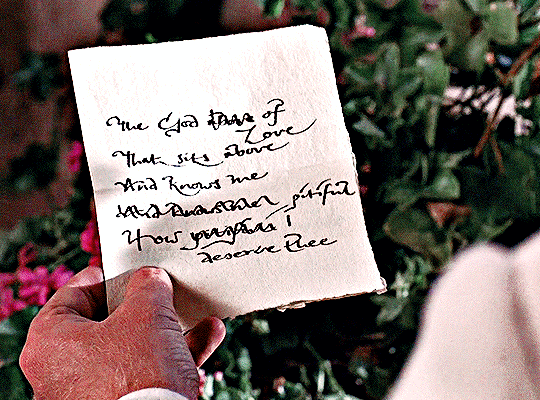
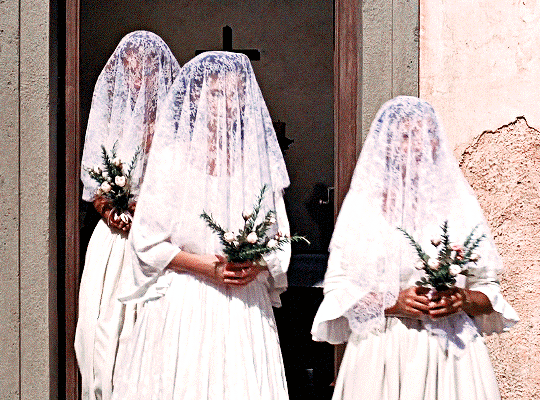


Film & TV I Think About A Lot » Much Ado About Nothing (1993) dir. Kenneth Branagh
Sigh no more, ladies, sigh no more.
Men were deceivers ever,
One foot in sea, and one on shore,
To one thing constant never.
Then sigh notso, but let them go
#thats right two gifsets in one weekend - absolutely do not expect this lol#but I WILL be making a separate denzel set bc that is primarily what makes this film for me#cgedits#mygifs#much ado about nothing#much ado about nothing (1993)#shakespeare#kenneth branagh#denzel washington#emma thompson#keanu reeves#cftv#cinema#filmgifs#90s#regency#movies#films#classic film#perioddramaedit#periodedits#moviegifs#fyeahmovies#userfilm
1K notes
·
View notes
Text

Names of shades and when in Regency England they were most popular.
#fashion#fashion history#regency fashion#colors#dye#19th century#19th century fashion#regency#empire#empire fashion#'i don't care what mama says; jonquil is NOT a racketty colour!'#gimme that pomona green tho
923 notes
·
View notes